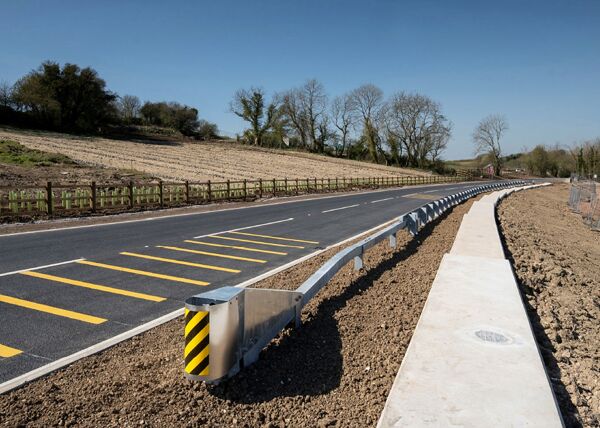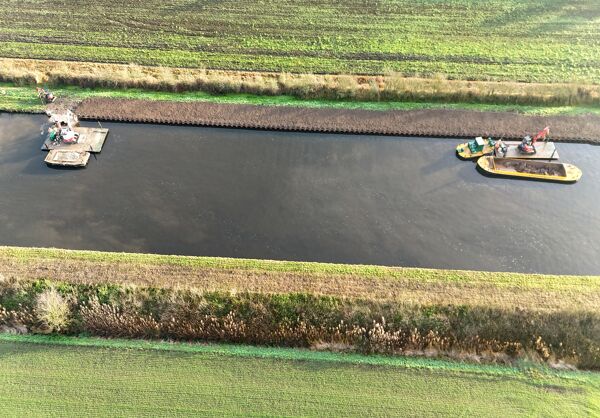
By Simon Fullalove
The Hong Kong government has used NEC to retrofit step-free access facilities at five existing footbridges and two existing subways in the North, Sha Tin, Tai Po and Yuen Long districts.
The Highways Department of the Government of the Hong Kong Special Administrative Region let an NEC3 Engineering and Construction Contract (ECC) Option B (priced contract with bills of quantities) worth HK$202 million (£20 million) to Excel Engineering Company Limited in January 2017. NEC project manager was the Major Works Project Management Office of the Highways Department with Mannings (Asia) Consultants Limited as NEC supervisor and designer.
The work involved retrofitting 14 public lifts together with associated drainage, roadworks, utilities diversions, street lighting, traffic aids and landscaping works. Key challenges included unforeseen ground conditions, such the founding rockhead for mini-piling being over 60 m deep in places plus obstructions due to uncharted underground utilities and existing foundations.
There was also late possession of some sites due to land issues, restricted access to work areas by other contracts, limited working space for piling in urban areas, congested underground utilities and limited temporary traffic arrangements. Despite all this and Covid-19 restrictions, the work at all seven sites was completed on budget and programme in March 2021.
Resolving challenges
While NEC is now the default contract suite for new public works in Hong Kong, the retrofitting scheme was selected one of the initial pilot projects. It was also the one of the first Highways Department projects to use ECC Option B.
Eddie Wong, senior engineer in the Major Works Project Management Office says, ‘The employer, contractor, project manager and supervisor were all fully committed to supporting the NEC “spirit of mutual trust and co-operation” and to input all necessary resources to make it a success.
‘Over its 4 year duration the project faced a lot of challenges, especially the extremely tight programme and site constraints imposed by utilities, difficult access and limited temporary traffic arrangements. The parties addressed and resolved the challenges one by one.’
A total of 43 NEC risk reduction meetings were held to discuss 101 early warnings raised. ‘All parties participated actively at these meetings to propose and discuss mitigation measures, including brainstorming the most effective and economical solutions,’ says Wong. ‘With the prompt actions taken by the parties agreed at the risk reduction meetings, all of the early warnings were successfully resolved.’
He says examples of how NEC processes mitigated the risk of delays include revising the layout of the lift shafts, modifying pile-cap design and piling layout to avoid diverting utilities, adopting trenchless methods for laying drainage pipes and water mains, and changing from general backfill to granular fill materials.
‘The good working relationship between the parties is reflected in the project’s statistics. There were 126 NEC project manager’s instructions, 90% of which related to changes to works information, and 149 NEC compensation events, all of which were assessed within a few months of completion.’
Lessons learned
According to Manning director Simon Ng, ‘We produced weekly NEC action lists, including the risk register and lists of project manager’s instructions, compensation events, notifications of compensation events and complaints. These were reviewed in weekly partnering workshops, which reminded all parties to act properly and complete their jobs in a timely fashion.’
He says a key lesson learned on the project was that timely reply by the project manager and supervisor was vital because it allowed the contractor to understand the situation regarding its quotations and notification of compensation events. ‘This helped both the contractor and employer to have better financial control, as well as helped the contractor to prepare a more practical and realistic programme. In this project, the project manager and supervisor always aimed to reply to the contractor in a timely manner.’
Ng says that on past NEC contracts in Hong Kong, contracting parties had different opinions on which programme should be adopted for assessment of quotations of compensation events. ‘ECC clause 63.3 states that, “a delay to the Completion Date is assessed as the length of time that, due to the compensation event, planned Completion is later than planned Completion as shown on the Accepted Programme.” However, not every programme submitted by the contractor could be accepted as an accepted programme.’
He says only about 60% of submitted programmes were accepted and the contractor sometimes argued that the existing accepted programme was outdated and that its latest programme, though not accepted, should be used for assessment. ‘In the end, the parties stuck to the assessment principle laid down in ECC clause 63.7 that, “Assessments are based upon the assumptions that the Contractor reacts competently and promptly to the compensation event, that any Defined Cost and time due to the event are reasonably incurred and that the Accepted Programme can be changed”.’
Benefits of using NEC
- NEC mechanisms to minimise disruption to the works programme enabled technical matters to be resolved as soon as they arose.
- NEC continuous communication requirements enabled the common goals of all parties to be achieved.
- NEC’s clear allocation of time and financial risk meant both parties were more prepared to provide solutions for problems under their control.




